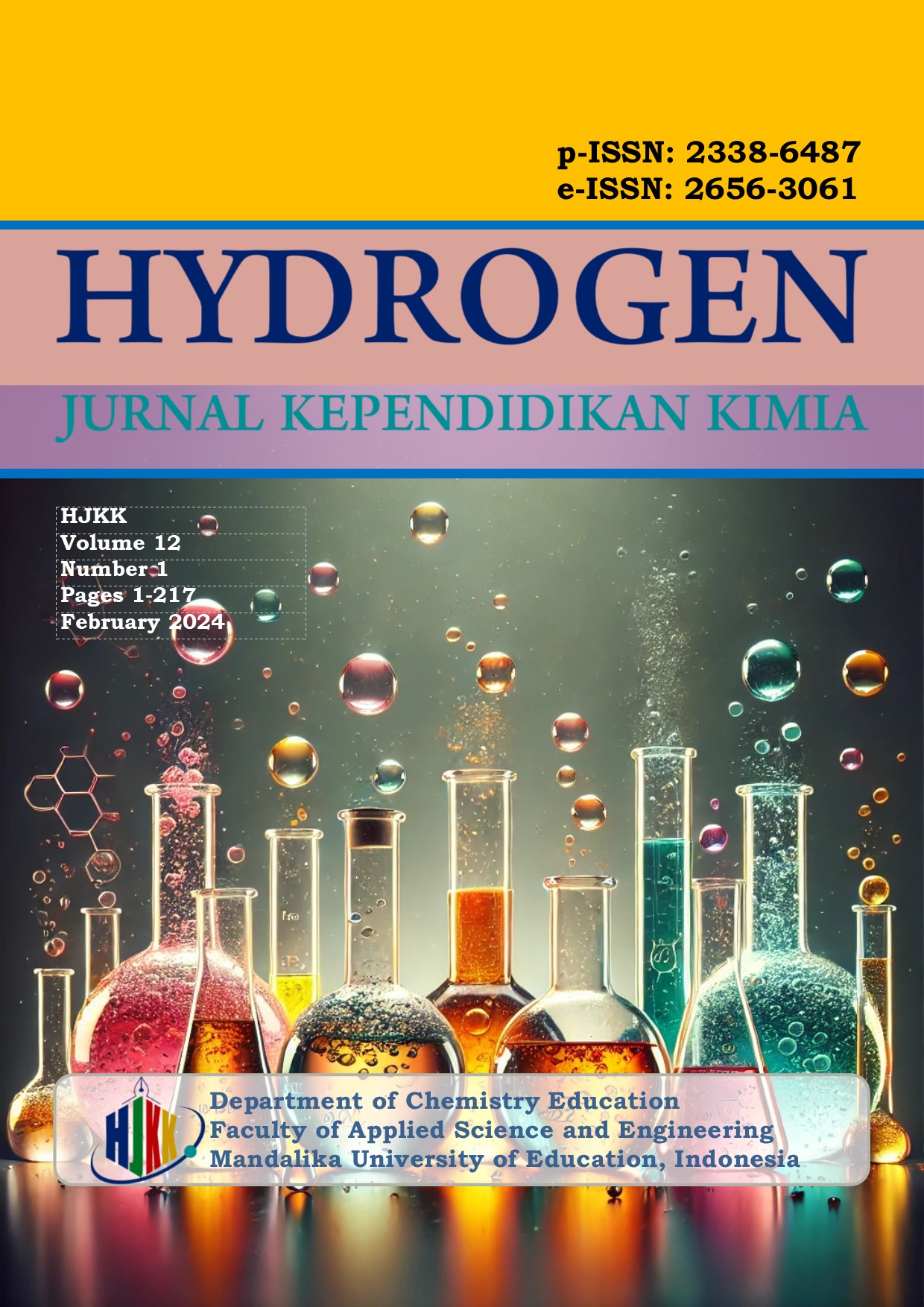Development of Chemistry Learning Media based on Joyful Learning with Snakes and Ladders Game on Stoichiometry material to Improve Student Learning Outcomes
DOI:
https://doi.org/10.33394/hjkk.v12i1.10192Keywords:
joyful learning, snakes and ladders game, stoichiometry, learning outcomesAbstract
This research aims to obtain chemistry learning media based on joyful learning with the snakes and ladders game on stoichiometric material that is suitable for use to improve student learning outcomes based on the validity, practicality and effectiveness of the game. The research method used is the research development (R&D) method with the 4D model by Tigharajan which consists of 4 main stages, define, design, develop and disseminate. However, the development of Joyful Learing-based Chemistry Learning Media with the Snakes and Ladders game has only reached the development stage. The research was carried out at Surabaya State University and SMA Negeri 1 Menganti Gresik. Test the game media using the One Group Pretest-Posttest Design system. Validity is obtained from the assessment of the stoichiometric snake and ladder game media by the validator. Practicality is obtained from the results of observing student activities, observing the implementation of learning activities, and student response questionnaires. Effectiveness is obtained from student learning outcomes. The results of the research show that chemistry learning media based on joyful learning with the snakes and ladders game on stoichiometric material is suitable for improving student learning outcomes with a feasibility score of ≥ 4 in the feasible to very feasible category. The practicality of chemistry learning media based on joyful learning with the snakes and ladders game on stoichiometric material to improve student learning outcomes is said to be suitable for use in terms of the results of observations of student activities which obtained a percentage of 96.81%, the results of observations of learning implementation obtained a percentage of 93.98%, and Student responses obtained a percentage of 91.52%. Then, the effectiveness of chemistry learning media based on joyful learning with the snakes and ladders game on stoichiometry material to improve student learning outcomes which was developed in terms of pretest and posttest scores was declared effective. This is shown by the N-gain score of all students being in the medium to high category and meeting the KKM value, with an average N-gain value of 0.79 with high criteria. This shows that the stoichiometric snakes and ladders game is declared suitable for use as a chemistry learning medium based on joyful learning on stoichiometric material to improve student learning outcomes.
References
Kemdikbud. 2016. Peringkat dan Capaian PISA Indonesia Mengalami Peningkatan. http://www.kemdikbud.go.id, Kemendikbud.
Lutfi, Ahmad, Nur Qurrotur Aini, Nurul Amalia, Putri Amiratul Umah, Maissy Diana Rukmana. 2021. Gamifikasi untuk Pendidikan Pembelajaran Kimia yang Menyenangkan Pada Masa Pandemi Covid 19. Jurnal Pendidikan Kimia Indonesia. Vol. 5 No. 2 Hal. 99-101
Nilawati, Nilawati, Putri Arum, Subandi, dan Yudhi Utomo. 2016. Keefektifan Pembelajaran Interkoneksi Multipel Representasi dalam Mengurangi Kesalahan Konsep Siswa Pada Materi Stoikiometri. Jurnal Pendidikan. Hal 2076-2082.
Ningsih, Silvia P, Amilda, dan Etrie Jayanti. 2021. Desain Permainan Ular Tangga dalam Pembelajaran Kimia. Orbital: Jurnal Pendidikan Kimia. Hal 49-66.
Pramita, Amilia dan Rudiana Agustini. 2016. Pengembangan Media Permainan Ular Tangga Pada Materi Senyawa Hidrokarbon Kelas XI SMA untuk Meningkatkan Pemahaman Konsep Siswa. UNESA Journal of Chemical Education. Hal 336-344.
Riduwan. 2015. Skala Pengukuran Variabel-Variabel Penelitian. Bandung: ALFABETA.
Ristiyani, E., & Bahriah, E., S. 2016. Analisis Kesulitan Belajar Kimia Peserta didik di SMAN X Kota Tangerang Selatan. Jurnal Penelitian Dan Pembelajaran IPA, Vol. 2 Hal 18–29.
Rosmiati. 2022. Pembelajaran Kimia yang Menyenangkan di Madrasah. Uniqbu Journal of Exact Science (UJES). Vol. 3 Hal. 18-23.
Zahro, N. M., & Lutfi, A. 2021. Students’ Well-Being and Game Implementation in Learning Chemistry in Merdeka Belajar Era. Jurnal Pendidikan Kimia Indonesia, Vol. 5 Hal. 34 – 43.
Downloads
Additional Files
Published
How to Cite
Issue
Section
Citation Check
License
License and Publishing Agreement
In submitting the manuscript to the journal, the authors certify that:
- They are authorized by their co-authors to enter into these arrangements.
- The work described has not been formally published before, except in the form of an abstract or as part of a published lecture, review, thesis, or overlay journal.
- That it is not under consideration for publication elsewhere,
- That its publication has been approved by all the author(s) and by the responsible authorities – tacitly or explicitly – of the institutes where the work has been carried out.
- They secure the right to reproduce any material that has already been published or copyrighted elsewhere.
- They agree to the following license and publishing agreement.
Copyright
Authors who publish with Hydrogen: Jurnal Kependidikan Kimia agree to the following terms:
- Authors retain copyright and grant the journal right of first publication with the work simultaneously licensed under a Creative Commons Attribution License (CC BY-SA 4.0) that allows others to share the work with an acknowledgment of the work's authorship and initial publication in this journal.Â
- Authors are able to enter into separate, additional contractual arrangements for the non-exclusive distribution of the journal's published version of the work (e.g., post it to an institutional repository or publish it in a book), with an acknowledgment of its initial publication in this journal.
- Authors are permitted and encouraged to post their work online (e.g., in institutional repositories or on their website) prior to and during the submission process, as it can lead to productive exchanges, as well as earlier and greater citation of published work.
Licensing for Data Publication
Hydrogen: Jurnal Kependidikan Kimia uses a variety of waivers and licenses, that are specifically designed for and appropriate for the treatment of data: Open Data Commons Attribution License, http://www.opendatacommons.org/licenses/by/1.0/ (default) Other data publishing licenses may be allowed as exceptions (subject to approval by the editor on a case-by-case basis) and should be justified with a written statement from the author, which will be published with the article.







